#GLAM geekery
Text

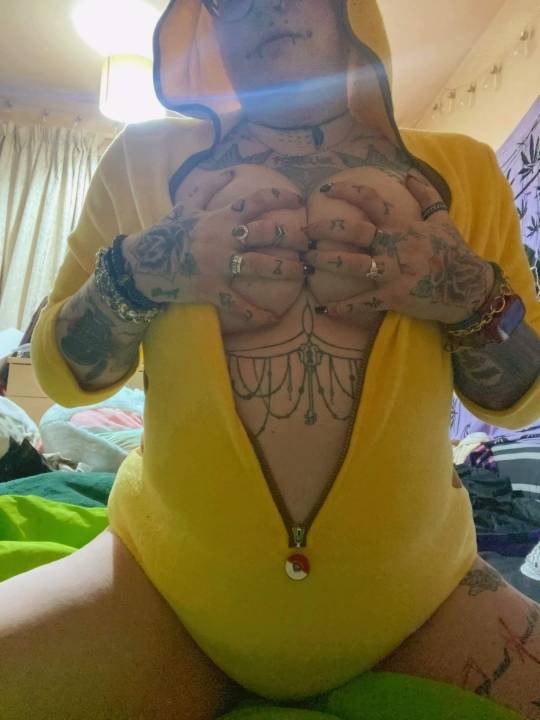
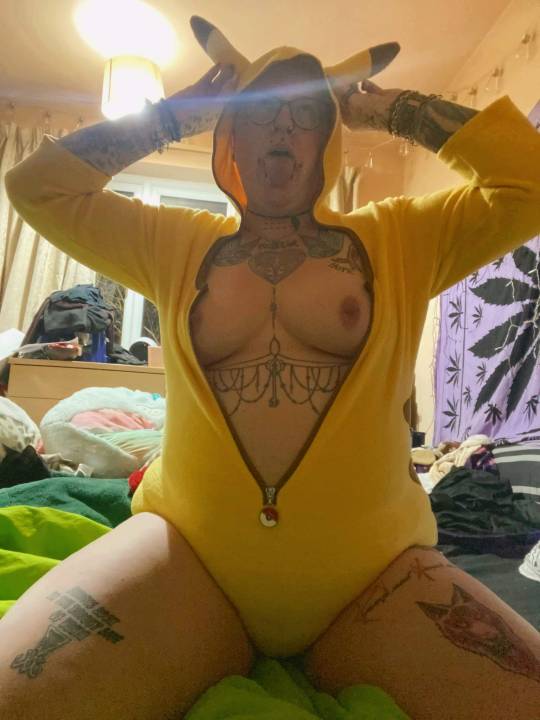
I'll be your Pikachu 💘
🌶️ This post is within Tumblr's TOS and has been marked w/ the correct community label 🌶️
╔═.✵.══════════╗
🄼🅈 🄻🄸🄽🄺🅂
╚══════════.✵.═╝
#frankie glam#frankieglam#frankieboo#pikachu#pokemon#geekery#little for big#content creator#queer#they/them#nonbinary#support content creators#deja queue
53 notes
·
View notes
Text
The birth of a horror fan
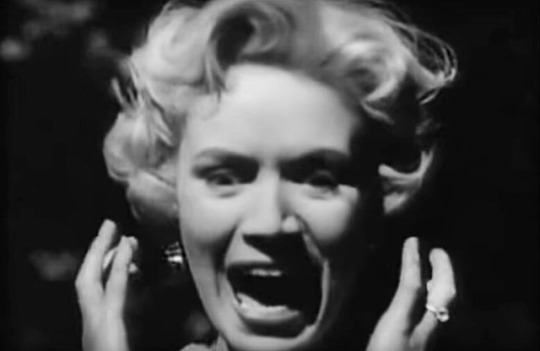
Still of Veronica Hurst as Kitty Murray in The Maze, 1953
I’ve watched 36 horror films in 26 days! For those that know me, this is a lot. For the first time I’m taking party in 31 days of horror. It’s not over yet, I have more horror films to see before the end of October. Viewing this many horror films in less than a month is a record for me!
I never thought I would call myself a horror fan. In the past I would occasionally watch horror films, usually hiding under blankets or peaking through fingers.
Why do some horror films scare me more than others? Is it imagination, sensitivity, suggestibility, tension, violence?
I’ve approached 31 days of horror with a clear plan to watch horror films released between 1900 and 1959. The films I’ve watched are rare, classics, beautifully crafted stories, and the images stay with you.
I’ve noted some interesting recurring themes and plot devices such as newspaper headlines; supposedly dead bodies sitting upright in the morgue; religious figures fighting evil; ‘What a strange man’ is often said; scientists meddling with nature features; cats hissing as a warning (take heed!); Scotland Yard is useless in dark times.

Still of Fay Wray as Eve Trowbridge in The Most Dangerous Game, 1932
I’m now a fan of the original Scream Queen, Fay Wray. She adds depth and sensitivity to the damsel in distress leading lady. She often finds courage and strength in her characters. If you’re not familiar with Wray’s work, check out: Doctor X, dir. Michael Curtiz, 1932; The Most Dangerous Game, dir. Irving Pichel and Ernest B. Schoedsack, 1932; and The Evil Mind / The Clarvoyant, dir. Maurice Elvey, 1935.

Still of Norma Eberhardt as Rachel Mayberry in the Return of Dracula, 1958
Female empowerment has been a theme I’ve relished. Women taking control, showing courage and ingenuity in films like: Cry of the Werewolf, dir. Henry Levin, 1944; She-Wolf of London, dir. Jean Yarbrough, 1946; The Return of the Vampire, dir. Lew Landers, 1943; The Return of Dracula, dir. Paul Landres, 1958; Island of Doomed Men, dir. Charles Barton, 1940; The Maze, dir. William Cameron Menzies, 1953; Phantom of the Opera, dir. Arthur Lubin, 1943.
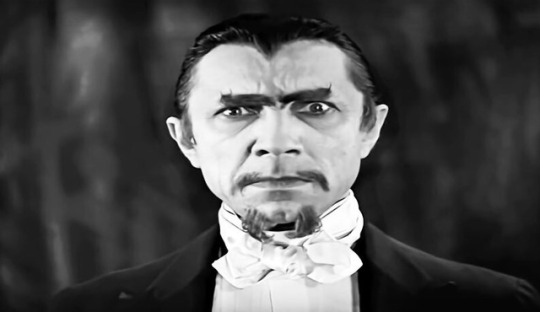
Still of Bella Lugosi as "Murder" Legendre in the White Zombie, 1932
I’m becoming familiar with the work of some of the greatest actors of the genre. I’ve seen lots of Bella Lugosi films: Dracula, dir. Tod Browning, 1931; White Zombie, dir. Victor Halperin, 1932; Son of Frankenstein, dir. Rowland V. Lee, 1939; Black Friday, dir. Arthur Lubin, 1940; The Wolf Man, dir. George Wagner, 1941; The Return of the Vampire, dir. Lew Landers, 1943. Boris Karloff co-starred in many films with Lugosi, but was a star in his own right. I’ve seen more Karloff films: The Mummy, dir. Karl Freund, 1932; The Ghoul, Dir. T. Hayes Hunter, 1933; The Black Room, dir. Roy William Neill, 1935; Son of Frankenstein, dir. Rowland V. Lee, 1939; Black Friday, dir. Arthur Lubin, 1940; The Devil Commands, dir. Edward Dmyryk, 1941.

Still of Boris Karloff as Ardeth Bay / Imhotep / The Mummy in The Mummy, 1932
With only a few days left of October, I’m already planning the films I might watch next October. 31 days of Australian horror films? I’m not sure yet, but I will certainly have fun when I get there. Beginning something, challenging myself, learning, enjoying the adrenaline of being scared, laughing and sharing these films with others, I’ve enjoyed discovering some truly incredible films.
Beginning is the theme for newCardigan’s GLAM Blog Club this month.
#glamblogclub#glam#ausglamblog#archivist#museum archivist#glam blog club#newcardigan#glam geekery#horror#horror films#classics#31 days of horror#halloween
5 notes
·
View notes
Photo

Surprised by some of my #bestnine2017, but I'm flattered y'all liked seeing my face so much. I definitely posted more photos of myself than I have previously. Does that make me a narcissist or a typical Leo 🦁? Either way, I've loved taking photos & putting together geeky outfits, so it's a relief you've liked them, too. Really pleased my Loki outfit made it since it was pretty glam. ☺️ There were other amazing moments of 2017 that aren't here (like the STAR WARS premiere), so I'll probably post a fave 9 later, but let me just say thank you for sticking around & sharing your lives with me too! 💖💖💖💖💖 . . . #bestnine #selfie #liveincolor #geekchic #geekery #2017bestnine #reflection #nye #newyearseve #geekfashion #whatiwore #wanderlust #travelgram #instacolorful #nastywoman #geekgirl #workwork #igblogger #neverthelessshepersisted #howluckywearetobealiverightnow
#howluckywearetobealiverightnow#geekery#igblogger#geekchic#selfie#wanderlust#whatiwore#newyearseve#neverthelessshepersisted#bestnine#travelgram#nastywoman#nye#bestnine2017#geekgirl#reflection#workwork#instacolorful#2017bestnine#liveincolor#geekfashion
1 note
·
View note
Text
Private moments
Voyeurism is part of the job. Reading correspondence, private diary entries, works in progress.... I watch private moments in the archives.
I wonder if the author of these private moments considers when writing that these moments are in fact not private. They belong to the organisation they work for, and will be studied in years to come. If the author is aware, does this alter their mode of expression?
In the Museums Victoria Archives, correspondence between experts working in the same field but different countries, over many years, the lines are blurred between professional exchanges and the personal friendships that form. Family holiday postcards are exchanged, and filed dutifully along with correspondence on museum letterhead. The sense of watching is felt keenly.
Museum experts receive letters from interested members of the public, all kinds of enquiries that are each dutifully responded to in turn. As the Museum has grown, so has the number of enquiries. Now a unit in the museum fields these enquiries and logs them in a central database. No enquiry is ever allowed to fall between the cracks. A great deal of work goes into providing access to information, collections, experts and answers.
In 1988 a 9 year old girl wrote to the Museum of Victoria about her stamp collection, her interest in stamps, and declared that “... collecting stamps is one of my best hobbies”. The girl also asked for information on collecting stamps and asked if the Museum could send her some. Such a tender and heartfelt moment, which could have been easily crushed if the girl received no response from the Museum, or received a short and sharp response. Thankfully John Sharples, Curator of Numismatics, did not disappoint. In fact, Sharples letters never disappointed, he always gave kind and informative responses to all his correspondents.
Sharples replied: “Thank you for your letter about your stamp collection. Unfortunately the Museum has no printed information on stamp collecting that I can send to you. We have only a small stamp collection from the period when stamps were first used in Australia”.
Although Sharples was unable to provide information about stamp collecting, and could not send the girl any stamps, he was still encouraging: “May I suggest that you visit your local library and ask the librarian to show you where the books on stamps are kept”.
If I was the girl who received this letter, I’m sure my love of stamp collecting would have been inflamed by such encouragement. Sharples final encouragement: “Stamp collecting is indeed a good hobby and I hope that you continue to enjoy it for many years”.
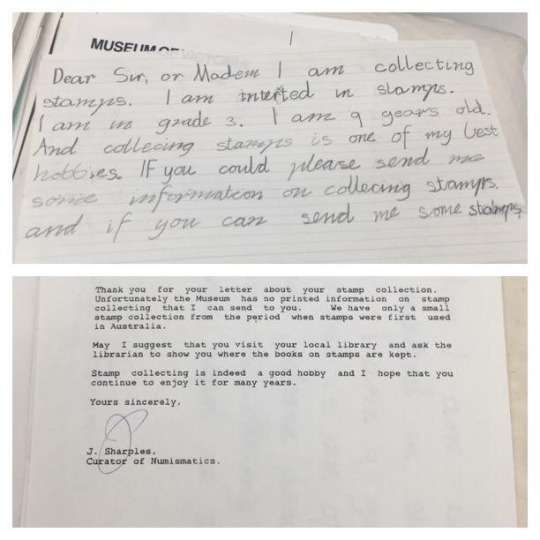
Above cropped image of letter from unidentified girl addressed to the Museum of Victoria, and below reply from John Sharples, Curator of Numismatics, 1988 / Photographer: Nik McGrath / Source: Museums Victoria Archives
This is just one example in a sea of private moments contained in the Museums Victoria Archives. I feel privileged to witness these moments. These letters feel fresh, indeed 1988 is recent history. In fact I was 7 turning 8 years old myself in 1988. This letter could easily have been written by me. I too had a stamp collection which was one of my prized possessions.
I have protected the identity of the girl in sharing this letter online. I wonder if she might see this blog and remember writing the letter.
Private moments are recent, and also distant memory. Letters written over 100 years ago, the ink bleeding into the soft tissue paper, paper folds cutting into the fragile paper, bring to life moments that feel like they happened yesterday.
‘Watch’ is our theme for newCardigan’s February GLAM Blog Club. I never realised how much watching and voyeurism is an essential part of my job.
#glamblogclub#GLAM Blog Club#glam#GLAM geekery#AusGLAMBlog#archivist#museum archivist#Museums Victoria Archives#Museums Victoria#correspondence#archives#watch
4 notes
·
View notes
Text
The Road Less Travelled Part II

How did she end up here, like this? How could there have been so much - so many moments, so many people and things… - Everything is Illuminated, Jonathan Safran Foer
In January this year I wrote a blog The Road Less Travelled, sharing my path to becoming an archivist: https://musingsofableedingheart.tumblr.com/post/156377570259/the-road-less-travelled-like-many-people. My archivist origin story is well covered in this blog, however I would like to add some more thoughts about ‘How I ended up here’ for this month’s newCardigan GLAM Blog Club.
When I became an archivist, I found my vocation. For as long as I can remember I have been obsessed with history, photography, art, material culture and piecing together narratives based on evidence from primary sources. As a museum archivist I have access to collections that feed my obsessions, and I receive many research enquiries that requires the piecing together of narratives based on archival evidence.
An example of piecing a narrative together is my research about the scientist Fay Murray. In December last year I received a public enquiry via the Discovery Centre at Melbourne Museum about Fay Murray from her nephew Reg Murray. Reg contacted the Discovery Centre about his aunt seeking information for the family history he is compiling. With the information that Reg supplied to the Discovery Centre, namely that Fay was a scientist who specialised in molluscs, in the 1950s to 60s, I immediately thought Fay may have worked with Hope Macpherson, who was Curator of Molluscs at the Museum during that time, the first female museum curator in Australia.
Fay’s story is particularly touching as she had rheumatoid arthritis, and overcame much adversity to pursue her love of science. With the help of Chris Rowley, Collection Manager in Marine Invertebrates, I have uncovered a great deal of information about Fay in the Archives, correspondence between Fay and Hope (1956 to 1964), I’ve interviewed her former colleagues (Bob Burn and Tom Darragh), inspected items Fay donated to the State Collection, and looked at her photographic slides (she was a gifted photographer), as well as corresponding and meeting with Reg Murray.
Chris and I took Reg to see the specimens Fay donated to the State Collection in the 1960s. Reg has sent me family photos of Fay and her siblings, and is still in contact. I will be publishing an article about Fay on the Museums Victoria website in the coming months.
Bringing personal stories to life from the archives is a passion of mine. I started out studying ancient history and art history after finishing high school and commencing my Bachelor of Arts at the University of Queensland. My passion for history remains strong all these years later. As an ancient historian, seeking primary sources was an important part of my education. To this day, I get a thrill each time I find out something important about my subject’s life from sources within the archives.
Another reason my path led me to archives is my passion for photography. Photography presented itself as a lens through which to see the world and a method to document aspects of my life and experiences. From my first experiences in the darkroom at high school, to my experiments that continued in the darkroom studying graphic design at uni a few years later, I grew a firm attachment to the art-form, which then gave me special insights into cataloguing photographic collections years later when my path led me to studying cultural heritage and later information management.
I see myself first as an archivist, and second as a photographer. However these two inextricably linked and interwoven elements of my vocation inform each other. My keen observation skills as a photographer allow me to see and observe important small and significant elements in the archives, and my attention to detail as an archivist describing items in the archives I bring to documenting metadata about my personal photographic collections. The archivist and the photographer in me understands the importance of documenting important moments that I will treasure in years to come. The family photographic archives are my responsibility, in many ways I know the digitisation, storage and access is solely expected of me by members of my family.
How I ended up here is a long and complicated story, with many strange twists and turns along the way. In some ways it was inevitable that I became an archivist, but in other ways I feel it was equally possible that I became a marine mammalogist travelling the worlds oceans, or a photographer hoping to live off my trade, a graphic designer selling my soul to the highest bidder, or an ancient historian seeking a new interpretation of a primary source that would wow classical historians, or an art historian breaking down stereotypes in the art world.
So many paths that I could have taken, but for some cosmic reason I was granted my dream job as a museum archivist, and I find myself in my vocation during an extremely exciting time where GLAM colleagues are collaborating on some of the most inclusive and innovative projects. I feel inspired and fortunate to find myself in this moment in time with such incredible people surrounding me.
2 notes
·
View notes
Text
Crashing Waves Through the Wall

The archives repository is silent. Tucked away on the ground floor of Melbourne Museum, back of house, the Museums Victoria Archives shares a collection store with the Museums Victoria Library journal collection. We also share a wall with the Te Pasifika Gallery and when it is silent - no chatting staff or volunteers - I can hear an audio loop of crashing waves through the wall. Without this audio loop the silence is deafening. The excruciatingly load announcement over the loudspeaker, ‘the museum will close in 5 minutes’, also breaks the silence.
The theme for newCardigan’s GLAM Blog Club this month is silence.
After silence that which comes nearest to expressing the inexpressible is music - from essay The Rest is Silence in Music at Night and Other Essays, Aldous Huxley, 1931. Silence is just as powerful as music. Yin and yang, music and silence are opposite forces. When I am alone in the archives I very rarely sit in silence. I often listen to music.
Conspicuously the air conditioning is barely audible. In some collection stores the air conditioning is very loud because the temperature must remain low to preserve the collection. In the archives where the collection is predominantly paper-based, the temperature must remain under 20 degrees celsius and thus the air conditioning gets less of a work out.
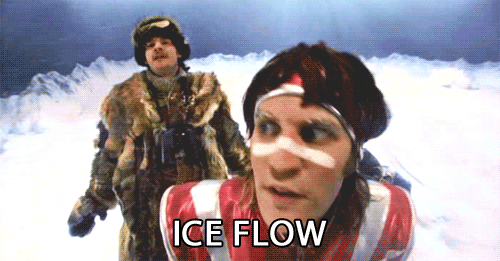
Cold vaults storing audiovisual and photographic collections under 10 degrees celsius are loud places.
So not all archives are silent, but I think it is fair to say that most archives have stories that remain silent. Thousands of voices are in the pages carefully filed away in archive boxes waiting to be given a voice.
It’s the responsibility of the archivist to ensure that the collection under their care is accessible, and to raise the profile of the archives and the valuable information housed within their collection. Archivists create finding aids to give a voice to silent records.
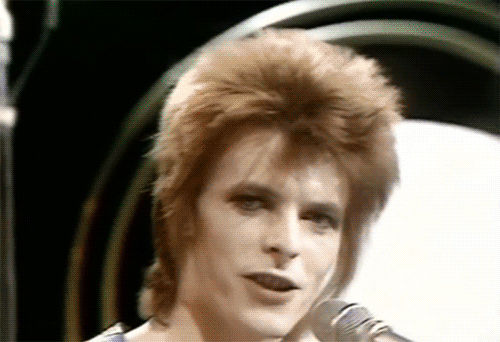
Archives often contain at least one Ziggy Stardust or vital record in their collection. The Ziggy Stardust of the archives will have a voice over and over again through generations of researchers. The unsung heroes, the voices unheard, are often just as compelling as the Ziggy Stardust’s of this world.
If nobody else sees value in these stories, the archivist who knows their collection best has an opportunity to tell stories from the archives in a variety of ways. Archive tours, blogs, seminars, research requests, finding aids, and archival description are just some of the ways.
I love when the museum is bustling with visitors - it’s function is to be enjoyed by the community, it is a sad sight to see it on low visitation days. However, the scale of the building, the endless glass and polished concrete floors are an acoustic nightmare. It is remarkable how sound travels when a kid screams in excitement or in protest. School holidays are something else entirely. I will confess the silence in the museum after hours is ecstasy. For those who don’t often have time alone, it’s akin to those stolen moments of solitude.
1 note
·
View note
Text
Digital museum
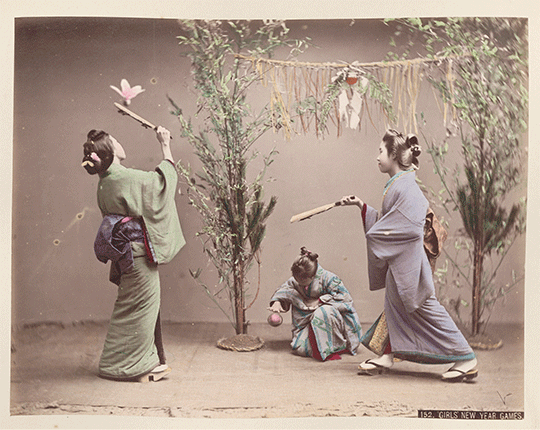
What direction will the digital age take museums?
Digital preservation is a vital tool in the management of museum collections. Digitised and born digital collections are increasingly made accessible online to local and international researchers and communities.
The preservation of artefacts and specimens digitally does not make the artefact or specimen obsolete, but provides a digital copy or surrogate, an insurance policy if the item is lost or deteriorates over time. Digitised collection items also provides the means to exchange knowledge about collection items between experts in different collection institutions without necessarily viewing the physical item.
Gemma Steele, librarian at Museums Victoria, recently wrote an article about the Rare Book Collection at Museums Victoria for the Australian Society of Archivists VIC Branch June newsletter. Museums Victoria Library has “the only copy of Albertus Seba’s Locupletissimi rerum naturalium thesauri accurata descriptio (1734-65) held in Australian libraries.
One of the volumes has been digitised and is available via the Biodiversity Heritage Library (BHL). Other institutions, such as the Smithsonian, have added their own digital copies, which has allowed us to compare hand-colouring and binding. The opposum’s teal nails, which we originally thought to have been a flight of fancy on behalf of the colourist, are in fact consistent across the coloured copies available in BHL.”

Albertus Seba’s Locupletissimi rerum naturalium thesauri accurata descriptio (1734-65) / Photographer: Nik McGrath / Source: Museums Victoria Library
Digital experiences physically in museums and virtually on museum websites and apps, provide alternative ways of interpreting collections, accessing museum expertise and knowledge, as well as new ways of thinking about collections, programs and exhibitions.
“Preservation is commonly perceived to be the responsibility of large, well-resourced institutions such as national libraries and archives, state libraries, and university and research libraries. This perception is no longer valid in the digital age. It may have been a legitimate view in the days when expensive conservation laboratories were considered necessary for a successful preservation program and when computer installations were few in number, but the current reality is very different. Digital materials are now being created at a rapid rate by many different kinds of communities. Responsibility for their preservation must be shared among diverse creators and users of digital information, and cannot remain solely the concern of librarians, archivists, and specialists with skills in digital preservation” – Ross Harvey and Jaye Weatherburn, Preserving Digital Materials, Third Edition, 2018.
Museums Victoria’s Strategic Plan 2017 to 2025, in Lynley Marshall’s CEO message, the following statement is made: “We will create digital experiences that deliver Museums Victoria’s stories, research, collections and content far beyond our walls to the world at large. As a leading centre for technological and scientific excellence, we will foster innovation and enterprise in Victoria”.
Digital is one of the three transformational themes in the Strategic Plan: “Develop a Digital Life for Museums Victoria that takes the wonder and inspiration of our collections, knowledge and expertise beyond our walls through audience-centred experiences that connect with hearts and minds.”
Digital preservation isn’t the answer for all preservation and access issues, however innovative ways of using digital in the GLAM sector is the direction we’re moving and who knows what the future holds...
#glam#glamblogclub#ausglamblog#archives#archivist#museum archivist#newcardigan#glam geekery#glam blog club#museum#museum collections#digital preservation#digital#preservation#rare books#digitisation#born digital
5 notes
·
View notes
Text
What I Wish They Taught Me in GLAM School
Most of the skills I need to be an archivist I learnt on the job. I have a Masters in Cultural Heritage from Deakin and Masters of Information Management from RMIT. Information Management is more focused on library skills. The archive course in the degree is not practical enough to prepare graduates to walk into an entry-level archive job.
I love lists, whenever I need to get things done I write lists, so here are some lists.

What I wish they taught me in GLAM School:
First, I wish there was a dedicated archivist degree
Archival software systems training – especially TRIM training which is often required for government positions
Appraisal sentencing and disposal experience
Familiarity and experience with applying Retention and Disposal Authorities, Public Record Office Victoria (PROV) standards
Basic preservation and conservation training for handling archival material, pest management, climate monitoring, rehousing archival material and disaster preparedness training by professional conservators
How to create effective finding aids and research guides
Hands on experience with archive collections
How to write policies and procedures
How to mentor students and volunteers
Research proposal writing skills
Journal article writing skills
How to peer review journal articles
How to write an abstract for a conference
For people working in GLAM front of house, I also think conflict management training should be part of every degree. It is certainly something that I know my public librarian colleagues are trained for on the job.
I also wish that the degree included a more practical approach to prepare graduates for job hunting:
Resume writing
What practical experience you need to have on your resume
Successful job application writing skills
Interview skills
Professional advice about volunteering
Your rights in the workplace
LinkedIn profile guidance
Social media training
When you land your dream job:
Be active in your workplace
Get to know your colleagues, not just in your department but across the organisation
Learn what others do in their jobs to better understand your organisation, and so that you can also develop your skills and better do your job
Attend as many professional development training sessions as possible
Read the intranet news and learn the history of the organisation, so that you know what’s going on in your organisation and can, with time, be an authority and advocate on behalf of your organisation internally and externally
Attend staff meetings - actively listen and contribute
Find a mentor, someone with the time to guide you
Importantly stay in touch with your student cohort – they will be your friends and support network for your career ahead
Now that your working, keep learning – lifelong learning is the key, so attend seminars, conferences, listen to podcasts and read blogs and articles, a lot, because the profession is growing and changing all the time, and you need to be part of the change, adapting to knew technologies and theories
Speak up in your organisation and GLAM community, don’t be apolitical – we have a responsibility to our communities
0 notes
Text
Legacy

National Museum of Victoria registers / Souce: Museums Victoria / Photographer: Nik McGrath
It’s the end of another year. Do you look back and think, how did I get here? How did the year flash by so fast?
Managing a collection, time is swift, but it feels like the end is never in sight. Work to appraise, register, track and fully understand and interpret a collection is endless. When you look back at what you’ve achieved over the past year, it’s important to acknowledge small wins. Each win adds up over time, feeding into the bigger picture of what you have planned for the collection.
Curators, collection managers and archivists often dedicate their career to managing one collection, and they are in a long line of predecessors who have done the same. How does each collection manager have a sense that their contribution is felt in the legacy of work that is involved in managing the collection? Perhaps it is that they take the collection policy in a new direction. Perhaps they make the collection more visible via social media. Perhaps they attract researchers to interpret the collection in new ways.
Access to the collection by people from all age groups, backgrounds, disciplines, academics and non-academics, and community, opens the collection up to interpretation and appropriation. This work is endless, and I would argue, the reason why archivists work tirelessly to preserve, describe, store and provide access to archives.
Planning and prioritising work annually gives you an opportunity to document the progress of your work. Although it often feels like the end is never in sight, and what you want to achieve is far away, with each small win, your endless task of managing the collection is hopefully on the right track.
#glamblogclub#archivist#glam#glam geekery#museum archivist#newcardigan#archives#glam blog club#museum#ausglamblog#legacy#end#endless#collection management#shelfie
1 note
·
View note
Text
Democratisation in action
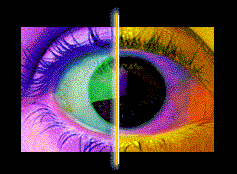
There is no political power without control of the archive, if not of memory. Effective democratisation can always be measured by this criterion: the participation in and the access to the archive, its constitution and its interpretation. - Jacques Derrida, Archive Fever, 1995
Control is vital in the world of GLAM. If control is lost, items are not registered in databases making them untrackable and unused. Library books never find their reader, knowledge in archives untapped, gallery collections locked away in stores never to be displayed, and museum objects go unnoticed and unstudied.
Museums Victoria has 17 million objects - can you imagine if museum workers lost total control, these objects and specimens are rendered meaningless without the metadata and systems that track them.
The Commonwealth Record Series (CRS) System is the archival control system the National Archives of Australia has used since the early 1960s to classify and control Commonwealth records. In the CRS Manual, the word control is used 61 times. Clearly control is important to archivists.
Although it’s important that archivists maintain control of the systems that ensure items are trackable and findable, it is also important that archivists enable access. Raising the profile of archival collections and awareness of the content available within collections provides more opportunities for individuals from diverse backgrounds to interpret archival material in new and interesting ways. This is democratisation in action.
Gone are the days of archivists acting as gatekeepers to these valuable collections. Archivists are the catalysts in this open access movement.
Communities are also demanding greater access to museum collections, both on display and back of house. Social media has played an important role in providing digital access to collections, and insights into the work of GLAM professionals and what goes on behind the scenes. Some GLAM institutions have embraced this new-found openness to their operations wholeheartedly.
One of my favourite examples of this is Tate’s Archives and Access project (2012 - 2017), made possible through a £1.9 million grant from the Heritage Lottery Fund. At the completion of this five-year project, 52,000 items from the Tate Archive have been digitised and published online. “The project also produced a suite of digital tools and resources that support discovery of the digitised collections. These include: the Albums feature, which allows users to collate and share collection pieces published on our website; Animating the Archives film series, which explores artists and themes inherent in the collections, and; AnnoTate, an online crowdsourcing transcription tool that invites audiences to transcribe text from the collections.” - http://www.tate.org.uk/about-us/projects/transforming-tate-britain-archives-access
Funding projects such as Tate’s Archives and Access project is vital if we are to follow Derrida’s philosophy about providing access to archives as a means of ‘effective democratisation’. Publishing digitised archive material and new content online, interpreting archive material in new ways, such as in Tate’s excellent Animating the Archives film series, allows anyone with access to the Internet to use this archive material that was once studied by the privileged few. This is democratisation in action.
This is just one example to illustrate my point, however I am excited and optimistic about the future of archives because of all the other excellent examples of archivists using control systems to make items findable, and sharing collections online, on websites and social media, so that diverse communities have greater access.
youtube
#GLAM Blog Club#glam#glamblogclub#GLAM geekery#AusGLAMBlog#archivist#control#digitisation#Tate Archive#access#democratisation
1 note
·
View note
Text
“In a dark place we find ourselves, and a little more knowledge lights our way” – Yoda

I hope to find light in what I will learn this year during a time of darkness in our history. We have reason to hope, although that is sometimes hard to see when we consider the hopelessness our world faces due to power being given to the corrupt and stupid.
How can I make the world a better place? By learning to be a better person, learning from my friends and colleagues, and by sharing what I learn.
What do I hope to learn this year? This is a question I ask myself every year. This year I’m sharing what I want to learn in 2018 with you, dear reader, my fellow GLAM Blog Club peeps.
Emerging technologies and future trends of the GLAM sector
What is emerging in the GLAM (galleries, libraries, archives and museums) sector? New technologies? Future trends?
Oral history
It would be my wish to learn the skills of an oral historian, and to find a mentor who is willing to take me under their wing. Oral histories are vital in capturing social contexts and knowledge otherwise not recorded in any other digital or physical records. Audio heritage is an interesting emerging field of study. I am also interested in the art of listening and asking questions leading to faciliate sharing of knowledge and stories. I feel I have an important contribution to make to the archives.
Podcasting
Technology often confounds me, as does the technical elements of podcasting. Justine and Clare are highly skilled in producing cardiCast, which is an important means for newCardigan to reach a broader audience, to include people in our community in the virtual space. Recording, editing and publishing, and any other areas of podcasting, will be a focus for me this year.
Blogging
I blog, but do I blog to the best of my ability? Could I blog in a more readable style? How could I improve my blogs?

Letter written to entomologist Frank Spry (later staff member at the Museum) on behalf of Prof Frederick McCoy, Director, National Museum of Victoria, 30 July 1895 / Photograph: Nik McGrath / Source: Museums Victoria Archives
Deciphering historical handwriting
I often wish that I was born a century ago. I wish I had century-old skills in deciphering handwriting. Older generations may laugh at me, however they have an edge when it comes to reading historical handwriting. I find the more handwritten correspondence I read, the better my skills at comprehending difficult hands. I would like to take a more structured path to learning historical handwriting. Perhaps I need a tutor?!
Conservation of paper, audiovisual and photograph collections
My interest in conservation is important to my job, but it stems from my love of tangible heritage and the tactile nature of preserving and conserving collections. On the job training from the Conservation Department at the Museum is something that must be kept current to remain current with latest theory and techniques in the sector, ever developing and changing. The Grimwade Centre for Cultural Materials Conservation has a fantastic YouTube channel with useful how to videos. This is an area I am constantly working on, to improve and to learn from experts.
Museums Victoria organisational knowledge
Working for a large organisation such as Museums Victoria, with a vast history spanning 164 years, my goal each year, as Archivist at the Museum, is to gain organisational knowledge. I learn a lot about the Museum from answering research enquiries and reading material in the Archives, but I also take a strategic approach. I attend as many internal seminars and other Museum events as possible, explore all exhibitions, and read articles about museum objects in the collection on our Museums Victoria Collections website. I read blogs written by Museum staff, talk with colleagues about their work, research interests and read Museum staff publications. I read publications produced by external researchers enhancing what we know about our collections, past staff members and historical events of the Museum. I keep seeking and searching for more learnings about the Museum, each day I learn something new.

Great Hornbill and Southern Ground-Hornbill sketched from specimens on display at the Inside Out exhibition, Melbourne Museum, 17 January 2018 / Artwork and photograph by Nik McGrath
Watercolour
Not sure why, but for a very long time I have been intimidated by the idea of watercolour. I love watercolours created by my heroes, artists such as Norman Lindsay, William Blake and my best friend Lily McDonnell.
I recently went to a Creative Art Studio at Melbourne Museum in the Inside Out exhibition, run by artist Belinda Wiltshire. Belinda taught me to experiment with my art materials and techniques, including watercolour. To take more risks in 2018 with my art is my ultimate goal, and to develop my watercolour technique.
My sister and I have started ‘Watercolour Mondays’, as we both want to learn watercolour and by doing it every Monday we will motivate each other to keep trying, experimenting and learning this exquisite form of art.
I hope to gather knowledge and techniques from my artist friends, Lily above all, from YouTube videos of watercolour masters sharing their techniques and style, and any tips I can pick up along the way.
Memory
My short-term memory is shocking. I would like to do something about that... I’ve read that the memory can be trained. I would like to learn how to train my memory to better retain information, especially names, places and dates.
If I don’t achieve all my hopes and dreams for 2018 I will not be dejected, but determined to keep on trying and learning in 2019... That’s what lifelong learning is all about...
#GLAM Blog Club#glam#glamblogclub#GLAM geekery#AusGLAMBlog#archivist#lifelong learning#learn#2018#learning#memory#watercolour#art#risk#newCardigan#cardi core#conservation#historical handwriting#knowledge#oral history#blogging#podcasting#emerging technologies#future trends#Museums Victoria#museum#Yoda#Star Wars
0 notes